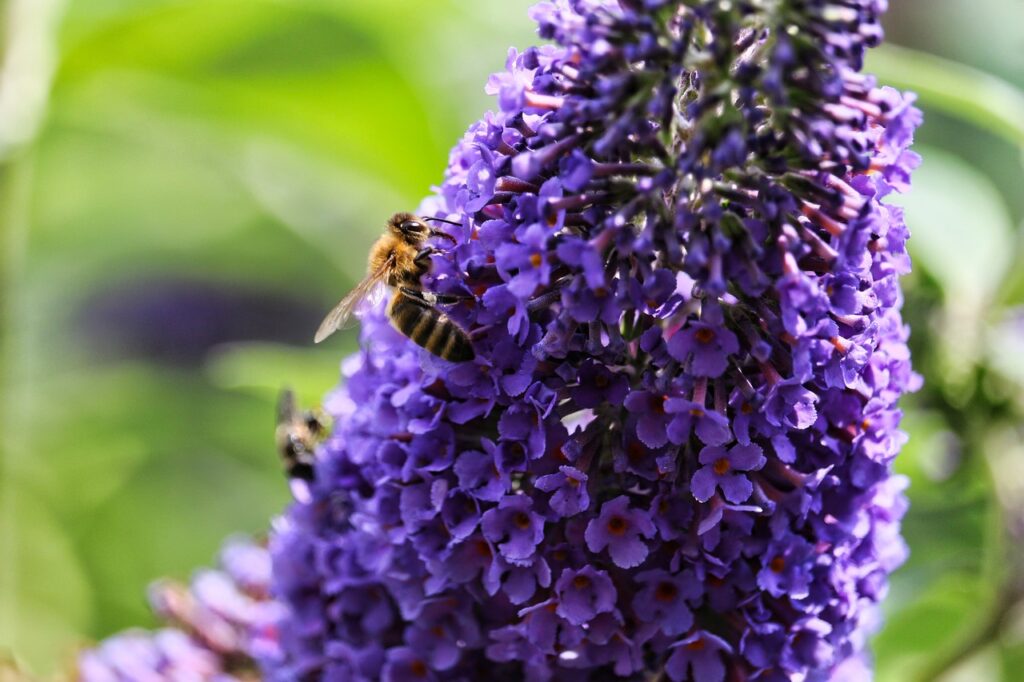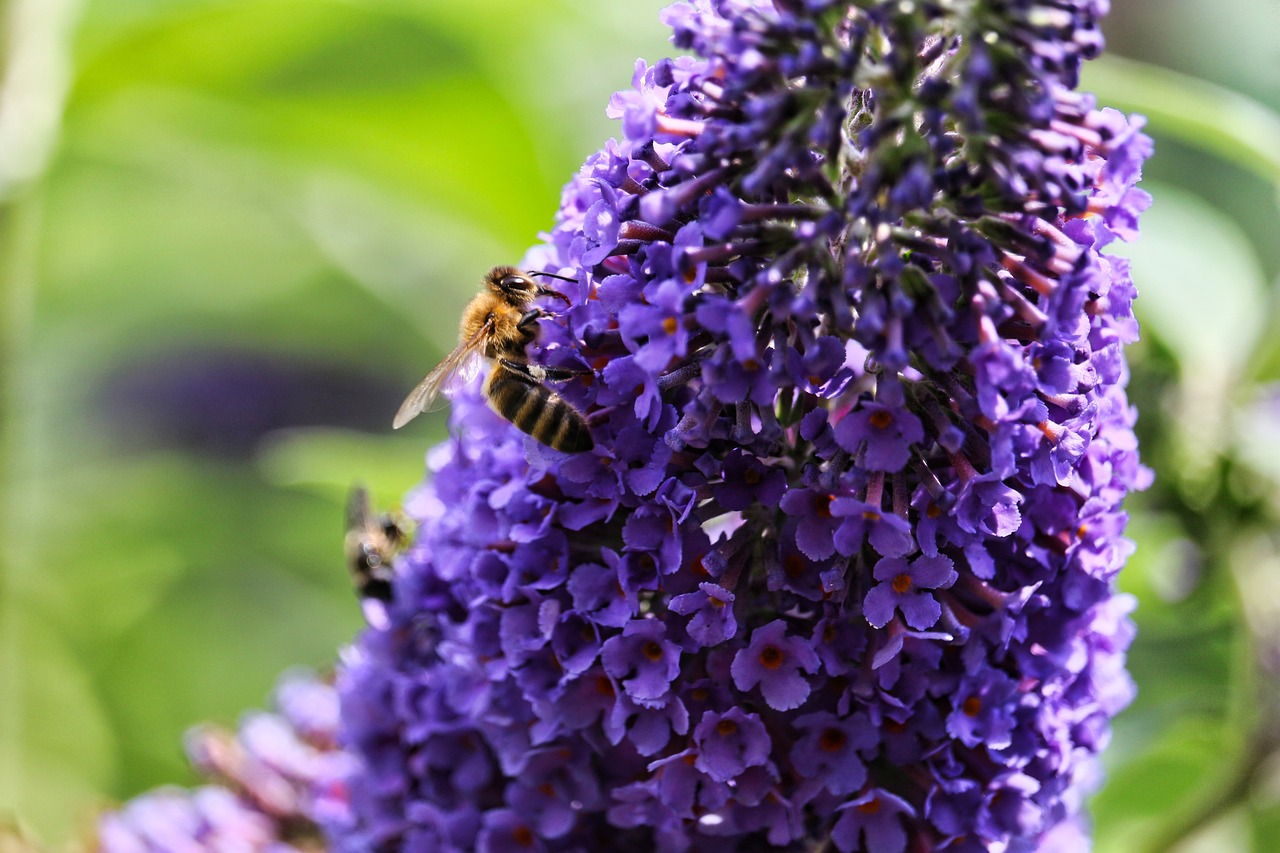Do you want to have a flourishing garden? Then you need to know the importance of pollinators. Bees and butterflies play a significant role in our ecosystem by pollinating flowers and plants. Without them, your garden would not be able to produce fruits, vegetables, or flowers. Therefore, it is crucial to attract these pollinators to your garden by providing them with a suitable habitat and the right flowers.
To understand the role of bees and butterflies in your garden, you need to know how they pollinate. When a bee lands on a flower to collect nectar, pollen sticks to its body. As the bee moves from flower to flower, it transfers the pollen, which fertilizes the plant and allows it to produce fruits and seeds. Butterflies also carry pollen on their bodies while they feed on nectar.
By attracting these pollinators to your garden, you are not only helping your plants thrive but also supporting the local ecosystem. So, let’s dive into how you can attract bees and butterflies to your garden and create a pollinator-friendly habitat.
The Importance of Pollinators in Your Garden
You can’t have a successful garden without the help of pollinators like bees and butterflies – they play a crucial role in bringing your plants to life! Pollinators are essential for the growth and reproduction of many plants, including fruits, vegetables, and flowers. Without them, your garden would produce fewer, smaller, and less nutritious crops.
Creating a pollinator-friendly garden not only benefits your plants, but also supports the natural ecosystem. By providing food and shelter for bees and butterflies, you’re helping to maintain the balance of the environment and ensuring the survival of these important species.
Unfortunately, pollinator populations are facing threats such as habitat loss, pesticide use, and climate change. By taking steps to attract and protect pollinators in your garden, you can help to mitigate these threats and contribute to a healthier planet.
Understanding the Role of Bees and Butterflies
When bees and butterflies visit your plants, they play a crucial role in the pollination process. Bees are especially important because they are responsible for pollinating about one-third of the food we eat, including fruits, nuts, and vegetables.
Unfortunately, both bees and butterflies are in decline due to factors such as habitat loss, pesticide use, and climate change. This decline can have a devastating impact on our ecosystem as a whole.
Without bees and butterflies, many plants would not be able to reproduce, which would lead to a decrease in the number of fruits and seeds available for human consumption and wildlife. In addition, the loss of pollinators can also affect the growth and survival of other plants and animals that rely on these plants for food and shelter.
It’s important to take steps to attract and protect pollinators in your garden to help mitigate the effects of their decline on our ecosystem.
Choosing the Right Flowers for Pollinator Attraction
If you want to increase the number of pollinators in your yard, it’s important to choose the right flowers. Flower color and bloom time are two important factors to consider when selecting plants for your garden.
Bees and butterflies are attracted to bright colors such as yellow, orange, and blue, so incorporating flowers with these hues can help attract more pollinators. Additionally, planting a variety of flowers that bloom at different times throughout the growing season can provide a consistent food source for pollinators.
It’s also important to consider pollinator preferences and habitat diversity when selecting flowers for your garden. Different pollinators have different preferences for flower shape, size, and scent. For example, bees are attracted to flowers with a tubular shape, while butterflies prefer flowers with a flat surface.
By planting a variety of flowers that cater to different pollinator preferences, you can attract a diverse range of pollinators to your garden. Additionally, incorporating a variety of plants with different heights, textures, and structures can provide habitat diversity for pollinators to nest and rest in between feeding.
Creating a Pollinator-Friendly Habitat
Creating a pollinator-friendly habitat can be a fun and rewarding way to support the local ecosystem and enjoy the beauty of nature in your own backyard.
Pollinator garden design is a crucial aspect of creating a habitat that will attract bees and butterflies. When planning your garden, it’s important to choose a variety of plants that bloom at different times throughout the season, providing a consistent source of nectar and pollen for pollinators.
Native plants are especially beneficial, as they have co-evolved with local pollinators and provide the best food sources for them.
In addition to planting the right flowers, you can also create DIY bee houses to provide nesting sites for solitary bees. These small, wooden structures can be placed throughout your garden and provide a safe haven for bees to lay their eggs and raise their young.

By providing a habitat for pollinators, you’re not only helping to support the local ecosystem, but also creating a beautiful and vibrant garden that you can enjoy for years to come.
Maintaining Your Garden for Long-Term Pollinator Support
Maintaining a pollinator-friendly habitat is crucial for ensuring a consistent source of food and nesting sites for local bees and butterflies. One way to do this is by increasing plant diversity in your garden. Bees and butterflies are attracted to a variety of flowers and plants, so it’s important to have a mix of different colors, shapes, and sizes. This not only provides a more appealing environment for pollinators but also ensures that they have a range of nectar and pollen sources throughout the season.
Seasonal planning is another key aspect of maintaining a garden that supports pollinators. By carefully selecting plants that bloom at different times of the year, you can provide a continuous source of food for bees and butterflies. For example, early-blooming flowers like crocuses and snowdrops provide vital food sources for bees emerging from hibernation in the spring, while fall-blooming asters and goldenrods provide important nectar sources for bees preparing for winter.
By planning ahead and selecting a variety of plants that bloom at different times, you can create a garden that supports pollinators year-round.
Frequently Asked Questions
How can I protect my garden from harmful pesticides that may harm pollinators?
Protect your garden from harmful pesticides by using pesticide alternatives like neem oil or garlic spray. Encourage natural predators like ladybugs and lacewings to control pests. Avoid using chemical pesticides and opt for organic options.
Are there any non-flowering plants that can help attract pollinators to my garden?
Incorporate texture into your garden design to attract non-flowering pollinator attractants like bumblebees and butterflies. Try using ornamental grasses, shrubs, and herbs to provide a diverse habitat for these important insects.
What can I do to help pollinators during the winter months?
During winter months, consider indoor options like growing plants with winter blooms, such as witch hazel or winter jasmine, to provide food for pollinators. This can help sustain them until outdoor blooms return in spring.
How do different weather conditions affect pollinators and their activity in my garden?
Different weather conditions can affect pollinator activity in your garden. Extreme heat or cold, drought, and heavy rain can all impact their ability to forage. Importance of diverse plant species for pollinators to have a stable food source.
Are there any specific colors or patterns that attract certain types of pollinators?
Pollinators have color preferences and pattern attractions. Bees are attracted to blue, purple, and yellow flowers, while hummingbirds like red flowers. Scent and taste influence pollinators, so consider planting a variety of plants to attract different species.
Conclusion
Congratulations! You’ve learned about the crucial role of pollinators in your garden and how to attract bees and butterflies.
By choosing the right flowers and creating a pollinator-friendly habitat, you can ensure that your garden is a haven for these important creatures.
But your job isn’t done yet. Maintaining your garden is key to long-term pollinator support.
Remember to provide a variety of flowers that bloom throughout the growing season, and avoid using pesticides that can harm pollinators.
With a little effort, you can help support the essential work of these tiny, but mighty creatures and enjoy a beautiful garden at the same time.
Happy gardening!






